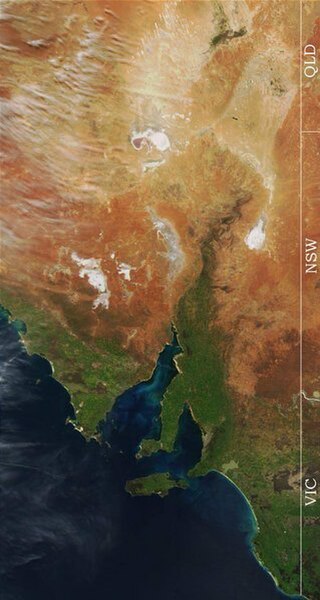Kingscote, South Australia
Kingscote is a town in the Australian state of South Australia located on Kangaroo Island about 119 kilometres (74 mi) south-west of the state capital of Adelaide. It is South Australia's oldest European settlement and the island's largest town. At the 2016 census, Kingscote had a population of 1,790. It is a well-established tourist centre and the administrative and communications centre. It is home to a colony of the smallest penguins in the world, the little penguin.
Dauncey Street
Commercial Street
Dauncey Street
Pelican feeding
South Australia is a state in the southern central part of Australia. It covers some of the most arid parts of the country. With a total land area of 984,321 square kilometres (380,048 sq mi), it is the fourth-largest of Australia's states and territories by area, and second smallest state by population. It has a total of 1.8 million people. Its population is the second most highly centralised in Australia, after Western Australia, with more than 77 percent of South Australians living in the capital Adelaide, or its environs. Other population centres in the state are relatively small; Mount Gambier, the second-largest centre, has a population of 26,878.
European settlers with Aboriginal Australians, 1850
Charles Sturt's expedition leaving Adelaide for central Australia, 1844
A satellite image of eastern South Australia. Note the dry lakes (white patches) in the north.
The Barossa Valley, northeast of Adelaide. South Australia's wine industry is the largest in Australia.








